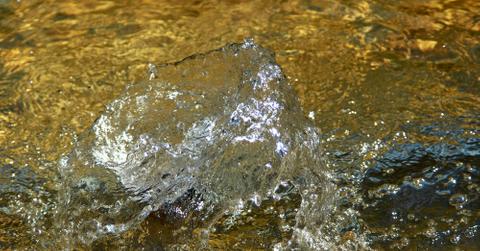
How Long Does Hydrostatic Pressure Last in a Basement? What You Need to Know
Hydrostatic pressure is a term that often comes up in conversations about basement waterproofing and foundation maintenance, but what exactly does it mean, and how long does it last? If you're a homeowner, understanding this phenomenon is essential to protecting your basement from leaks, structural damage, and dampness. Let’s delve into what hydrostatic pressure is, how it affects your basement, and whether it ever truly goes away.
What Is Hydrostatic Pressure?
Hydrostatic pressure refers to the force exerted by water on the surfaces it comes into contact with. In the context of your home, this pressure is caused by groundwater surrounding your foundation. When the soil around your home becomes saturated with water—typically from rain, melting snow, or rising water tables—it exerts pressure on your basement walls and floors.
This pressure increases as water levels rise and becomes more forceful in areas with dense, poorly draining soil. Left unmanaged, hydrostatic pressure can lead to water infiltration, cracks in the foundation, and even structural damage.
How Long Does Hydrostatic Pressure Last?
1. Seasonal Changes
Hydrostatic pressure fluctuates with the seasons. During heavy rainfall or spring thaw, water levels in the soil rise, intensifying pressure on the basement walls. In drier months, the pressure may subside as the water table lowers. However, areas with consistent rainfall or poor drainage may experience year-round pressure.
2. Soil Saturation
Hydrostatic pressure lasts as long as the soil around your home remains saturated. Clay soils, for example, retain water for longer periods compared to sandy soils, which drain more effectively. Homes built on or near clay-rich soil are more likely to experience prolonged pressure.
3. Water Table Levels
If your home is located in an area with a high water table, hydrostatic pressure may be a permanent concern. The water table rises and falls depending on weather conditions and nearby water sources, but in some regions, it remains consistently high, leading to persistent pressure.
4. Drainage Systems
Proper drainage plays a significant role in reducing the duration of hydrostatic pressure. Homes with effective systems, such as French drains or sump pumps, are better equipped to divert groundwater, minimizing prolonged pressure on the foundation.
Effects of Prolonged Hydrostatic Pressure
When hydrostatic pressure is left unaddressed, it can lead to a host of issues, including:
- Cracks in Foundation Walls and Floors: The pressure can cause walls and floors to crack, allowing water to seep into the basement.
- Basement Flooding: Persistent pressure can overwhelm weak points in the foundation, resulting in leaks or significant flooding.
- Mold and Mildew Growth: Damp environments foster the growth of mold and mildew, posing health risks to occupants.
- Structural Damage: Over time, excessive pressure can compromise the structural integrity of your home.
Managing and Mitigating Hydrostatic Pressure
While hydrostatic pressure may never fully "disappear," proactive measures can significantly reduce its impact on your home:
1. Install Exterior Drainage Systems
French drains, trench drains, or weeping tiles redirect water away from your foundation, alleviating pressure. These systems work best when installed during the construction phase but can also be retrofitted.
2. Waterproof Your Basement
Applying exterior waterproof membranes or interior waterproof coatings helps create a barrier that prevents water infiltration. Seal any cracks in the walls or floors with epoxy or hydraulic cement.
3. Grade Landscaping
Ensure the soil around your home slopes away from the foundation to direct water away. Proper grading minimizes pooling and reduces soil saturation.
4. Maintain Gutters and Downspouts
Clear gutters and extend downspouts to direct rainwater at least six feet away from your home. This prevents water from pooling near the foundation.
5. Install a Sump Pump
A sump pump collects and removes water from beneath your basement floor, reducing pressure from rising groundwater.
Conclusion
Hydrostatic pressure is a natural phenomenon that can last indefinitely if conditions around your home remain favorable for its existence. While its duration depends on factors like soil type, water table levels, and seasonal changes, effective drainage and waterproofing solutions can mitigate its effects. By understanding the root causes and taking proactive measures, you can protect your basement from damage and enjoy a dry, healthy home year-round. For expert contracting services that combine reliability with creativity, look no further than Zicklincontracting.com your partner in building excellence. Let me know if you want me to craft more lines!
